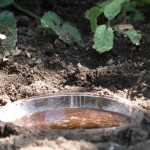Posts Tagged ‘pest’
Thursday, July 21, 2011
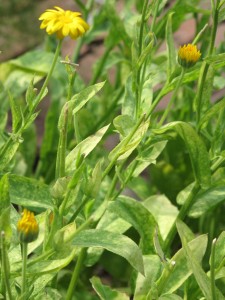
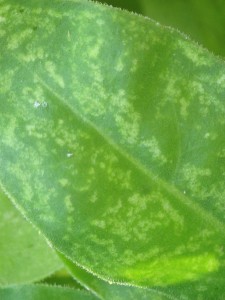
Left: A severe infestation of two-spotted mites on a calendula growing in Bonnefont garden. Right: A detail of the damage done by this common hot-weather garden pest, which sucks the chlorophyll from the leaves of the host plant. Photographs by Corey Eilhardt
The hot, dry weather that has us struggling to keep the gardens watered is all too welcome to the two-spotted mite, Tetranychus urticae, a worldwide pest of crop plants, ornamentals, and houseplants that is as much at home in greenhouses and apartments as it is outdoors. Two-spotted mites, along with other members of the Tetranychus family, are commonly known as spider mites. They are arachnids but are more closely related to ticks than to spiders.
Read more »
Tags: Bonnefont Garden, Calendula officinalis, catmint, hops, humulus lupulus, lady???s mantle, Levisticum officinale, lovage, meadow rue, Nepeta x faassenii, pest, Phytoseiulus persimilis, pot marigold, spider mites, Tetranychus urticae, Thalictrum aquilegifolium, two-spotted mite
Posted in Botany for Gardeners, Gardening at The Cloisters | Comments (2)
Monday, August 23, 2010
Above, left: The great gray slug, also known as the leopard slug because of the spots and streaks on its mantle, at home in Bonnefont garden. These nocturnal garden pests are not normally seen during daylight hours. This specimen was spied early one morning, and posed to have his-her portrait taken (slugs are hermaphrodites). Center: When fully extended, the adult slug can reach an impressive length. Right: A single strategically placed slug trap baited with beer will attract quite a few slugs. Photographs by Corey Eilhardt.
The great gray slug (Limax maximus) is also commonly known as the leopard slug because of the characteristic dark spotting on the mantle which covers the upper part of its body; the lower part of its body, known as the foot, is often streaked or striped. Leopard slugs vary in color from brownish green to gray, with whitish undersides. Adult slugs range from 4 to 8 inches in length. Read more »
Tags: carnivore, clary sage, detrivore, gastropod, great gray slug, herbivore, leopard slug, Limax maximus, malacologist, mandrake, mollusc, pest, Salvia sclarea, slug, slug trap, stout
Posted in Gardening at The Cloisters, Plants in Medieval Art | Comments (1)
Friday, April 24, 2009

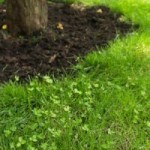
Left: A bird???s-eye view of Cuxa Cloister. Each quadrant of the garden contains a grass plot bordered with herbs and flowers. Right: Clover is planted in the lawn to provide several horticultural and ecological benefits.
In the spring of 2008, we began renovating the lawns in Cuxa Cloister by thoroughly removing the old grass with a thatch rake. We then added three inches of a mixture of topsoil and compost and raked them evenly. This was followed with a seeding of grass mixed with white clover (Trifolium repens). A thin layer of salt hay was then laid down to help retain water and protect the seed from birds. During this early stage, it is of the utmost importance to keep the soil evenly moist at all times. (Salt hay is preferable to hay as a mulch because it is free of weeds.) Once a lawn is established, however, it is best to water it as infrequently as possible. Most turf professionals recommend infrequent but deep irrigation to ensure the roots are thoroughly watered. There are many ways to conserve water in the maintenance of lawns. The most effective way is to choose the proper grass for your environment. Read more »
Tags: fescues, irrigation, lawn, nitrogen, organic, pest, rhizobia, Trifolium repens, white clover
Posted in Gardening at The Cloisters | Comments (1)
Wednesday, February 11, 2009
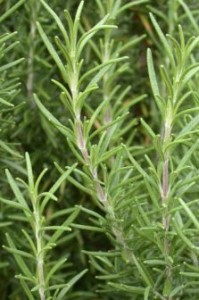
Above: A closer look at rosemary (Rosmarinus officinalis).
Most people who try to overwinter rosemary (Rosmarinus officinalis) inside are familiar with powdery mildew, Erysiphe sp. Similar to the whitefly I discussed in the earlier post, this fungus is favored by the indoor conditions that are typically provided in attempt to overwinter rosemary. Read more »
Tags: herb, Neem oil, organic, pest, powdery mildew, rosemary, Rosmarinus officinalis
Posted in Food and Beverage Plants, Gardening at The Cloisters | Comments (4)





